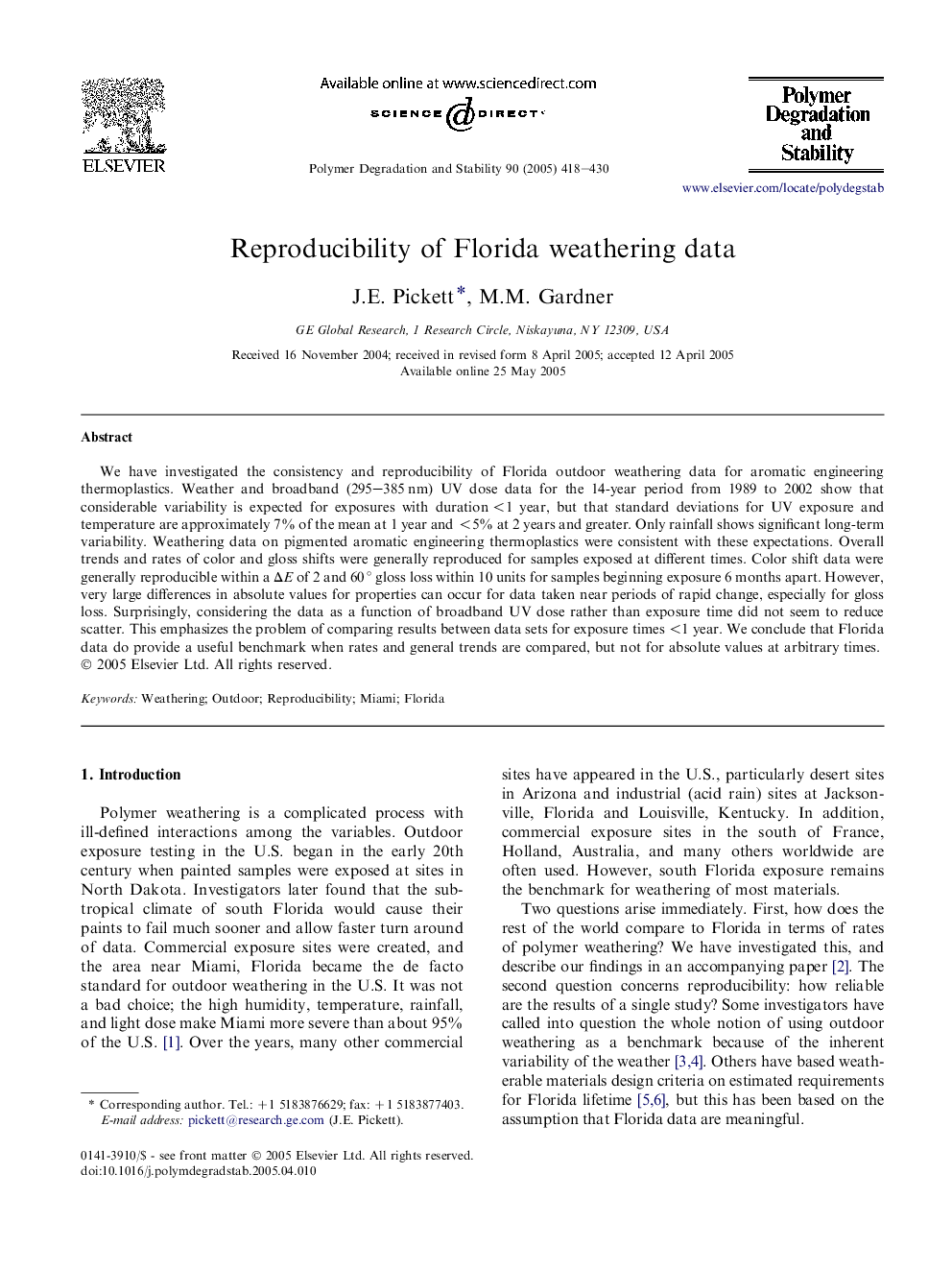| Article ID | Journal | Published Year | Pages | File Type |
|---|---|---|---|---|
| 9560613 | Polymer Degradation and Stability | 2005 | 13 Pages |
Abstract
We have investigated the consistency and reproducibility of Florida outdoor weathering data for aromatic engineering thermoplastics. Weather and broadband (295-385 nm) UV dose data for the 14-year period from 1989 to 2002 show that considerable variability is expected for exposures with duration < 1 year, but that standard deviations for UV exposure and temperature are approximately 7% of the mean at 1 year and <5% at 2 years and greater. Only rainfall shows significant long-term variability. Weathering data on pigmented aromatic engineering thermoplastics were consistent with these expectations. Overall trends and rates of color and gloss shifts were generally reproduced for samples exposed at different times. Color shift data were generally reproducible within a ÎE of 2 and 60° gloss loss within 10 units for samples beginning exposure 6 months apart. However, very large differences in absolute values for properties can occur for data taken near periods of rapid change, especially for gloss loss. Surprisingly, considering the data as a function of broadband UV dose rather than exposure time did not seem to reduce scatter. This emphasizes the problem of comparing results between data sets for exposure times < 1 year. We conclude that Florida data do provide a useful benchmark when rates and general trends are compared, but not for absolute values at arbitrary times.
Related Topics
Physical Sciences and Engineering
Chemistry
Organic Chemistry
Authors
J.E. Pickett, M.M. Gardner,
